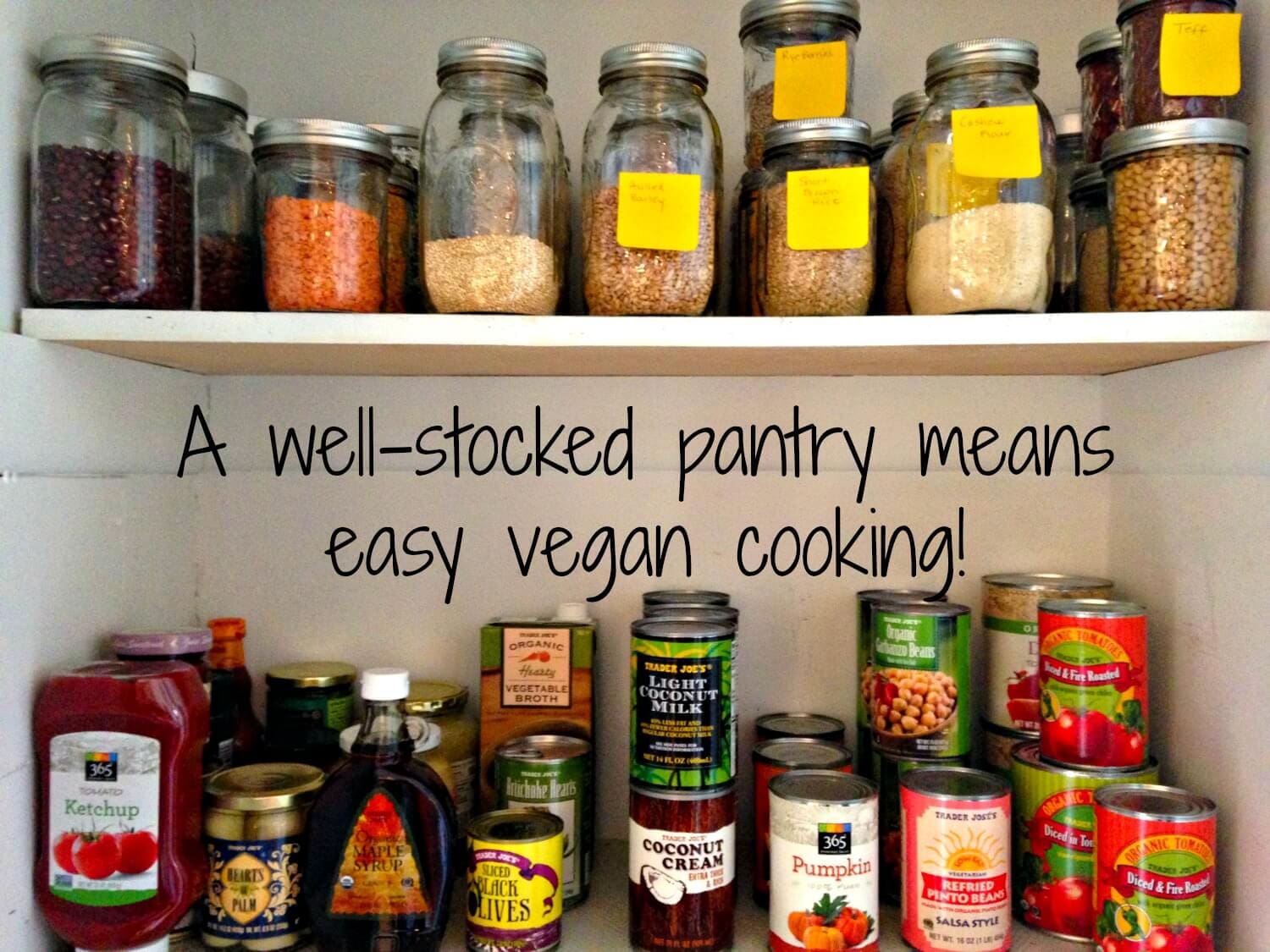
Stocking a Vegan Pantry
By Chef Linda
It’s a new year, and a maybe you’re thinking about a new you. A new vegan you! If you’re just getting started on your plant-based journey or even thinking about it, here are some vegan pantry basics to take the stress out of mealtime. Start simple, then gradually add new ingredients. Of course, you’ll want to add fresh vegetables and fruits to round things out.Beans
Beans are an inexpensive source of protein, fiber, and iron. Perfect for veggie burgers, salads, soups, and grain dishes. Chickpeas, black beans, kidney beans, and lentils are always in my pantry, but there are lots more to choose from. Buy dried, canned and frozen. Buying dried beans is generally more economical and nutritious, but don’t be intimidated if you’ve never worked with them before. A general rule of thumb is to soak your beans overnight in about 3 times their volume of water. Soaking reduces the cooking time and it breaks down the compounds in beans that cause flatulence. Leave them on the countertop or put them in the fridge to soak. When done, drain and rinse, then place them in a pot with fresh water, making sure the beans are covered by about two inches of salted water. Some say that salted water makes beans tough, I haven’t had that experience and I find that if I don’t salt during cooking, it’s difficult to flavor them afterward. You can find specific cooking times for each kind of bean online or on the package. I find that in general, I can plan on about an hour or so. Bite to test doneness, then drain. You can make a big batch and then freeze them in drained portions for easy use later.Grains & Pasta
Start with rice, oats (for veggie burgers and baking), quinoa (quick-cooking, full of protein), and barley (for risotto and soups). Try combining grains for variety. Add more grains, like millet, teff, and polenta, as you get comfortable. Buckwheat and rice noodles are great for stir fry. Cooking methods for most grains are similar, so it’s easy to experiment. Check out the Whole Grain Council website to see the wide variety of grains and to get some tips on how to cook and experiment with them.Nuts & Seeds
Raw almonds, cashews, walnuts, and pistachios are some of my favorite nuts because of their taste, versatility and health benefits, but let’s not forget about the wonderful variety of seeds like pumpkin, sunflower, flax, and hemp. They all provide healthy fat, protein, and minerals. Snack on them. Add them to stews (cashew chili anyone?) Grind and add to pancakes and baked goods. Make nut milk for homemade granola and add your favorites for a healthy dose of nutrients. Ground flax meal is known for being an egg substitute in vegan baking and cooking. Mix 1 tablespoon of ground flaxseed with 3 tablespoons of water and let rest for a few minutes to thicken.Nut Butters
Peanut butter, cashew butter, almond butter, and tahini are all rich sources of protein and make great dressings, sauces, and dips. Dip some celery sticks or apple slices in any one of them for a filling snack. Tahini dip is a favorite on vegetables like broccoli. Mix 2 tablespoons of tahini (or nut butter), some good quality soy sauce or tamari, lemon juice and water to thin. Delish!Dried Herbs and Spices
Add tons of flavor or heat to any recipe with a pinch or two of cayenne, crushed red pepper, cumin, garlic powder, paprika, chipotle, dried basil, oregano, tarragon, or thyme. Indian spices like turmeric, curry powder, cumin seeds, and garam masala impart a different exotic flavor to vegetable, chickpea or potato dishes. And cinnamon, allspice, cardamom, and ginger add a wonderful warmth to anything you add them to. Start by adding a few new spices each time you shop or try a new recipe. Spices generally keep for several years so they are a worthwhile investment.Dried Fruits
Raisins, dried apricots, cranberries, dates, figs, apples, pears, cherries, and prunes add natural sweetness and nutrients to oatmeal, quinoa, lentils, and many other dishes. Dates, when ground in the food processor, can become a pliable base for raw recipes, desserts, or energy bites. Or combine any dried fruit with nuts and seeds and make a trail mix.Other Essentials
- Canned coconut milk and coconut cream are essential for baking, quick whipped cream, and soups.
- Tamari, (or good soy sauce), adds flavor to everything. Some people swear by Bragg’s Amino Acids as a way to add flavor. Try coconut aminos for a soy-free alternative.
- Nutritional yeast provides B12 and a rich “cheesiness” to soups, popcorn, and mac & “cheese”.
- Healthy sweeteners, like real maple syrup, date and coconut sugars, and molasses are key.
- Oils, like coconut, extra virgin olive, toasted sesame, walnut, and sunflower are sources of important healthy fats and add a variety of subtle tastes to your recipes.
- Acids like apple cider, balsamic, and rice vinegars all add vibrant notes to recipes.
- Canned tomatoes and vegetable broth are must-haves.





